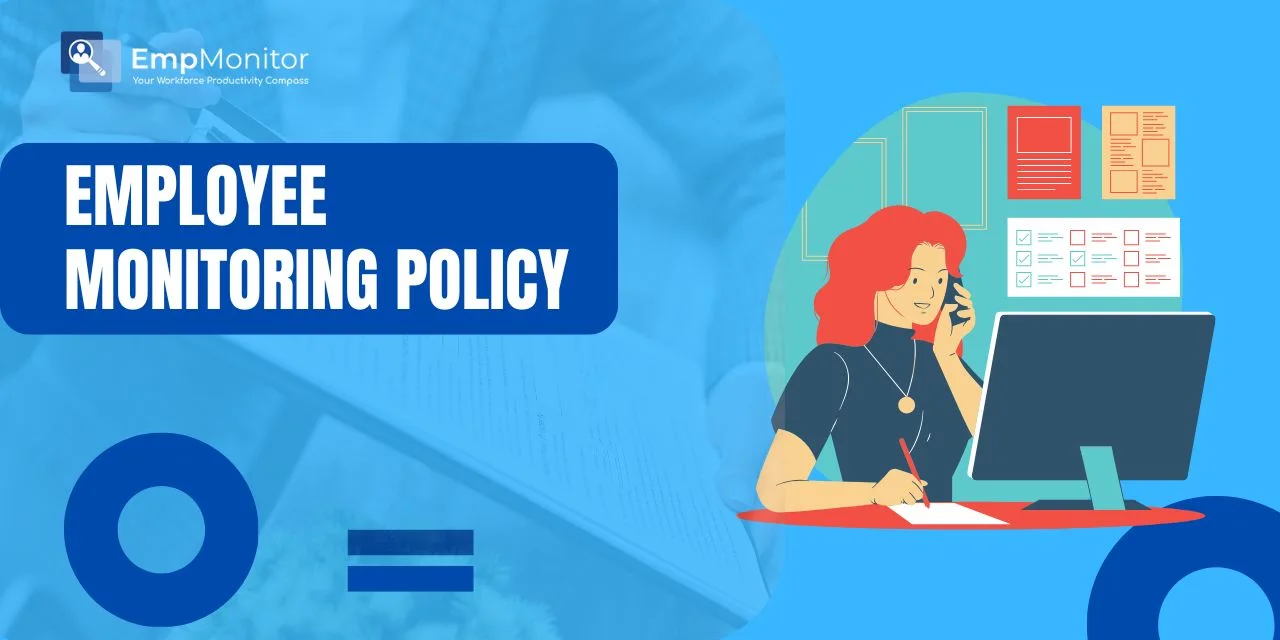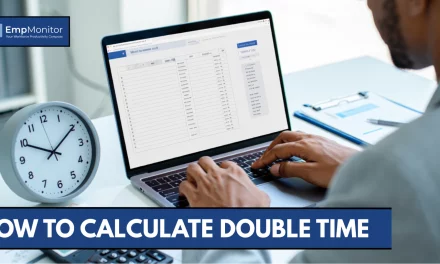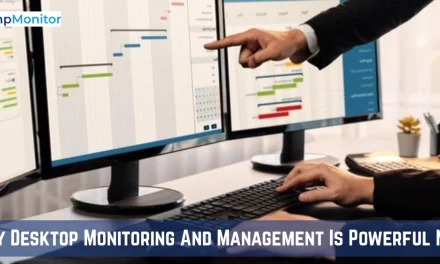In today’s digitally connected workplace, companies are increasingly turning to monitoring tools to ensure productivity, protect sensitive data, and maintain compliance. But before you even think about tracking an employee’s activity, you need one critical thing in place: a solid employee monitoring policy.
A well-written policy doesn’t just explain what’s being monitored. It creates transparency, sets expectations, and protects both the employer and employees from legal or ethical gray areas. In fact, without a clearly outlined monitoring policy, you might unintentionally cross a line that leads to distrust or even lawsuits.
So, how do you create a monitoring policy that is fair, transparent, and effective? That’s exactly what we’ll cover in this blog. We’ll walk you through everything from what to include in your policy, how to write it, legal considerations, real examples, and tools like EmpMonitor that help you enforce it the right way.
You can Also Listen to our Podcast here,
What Is an Employee Monitoring Policy?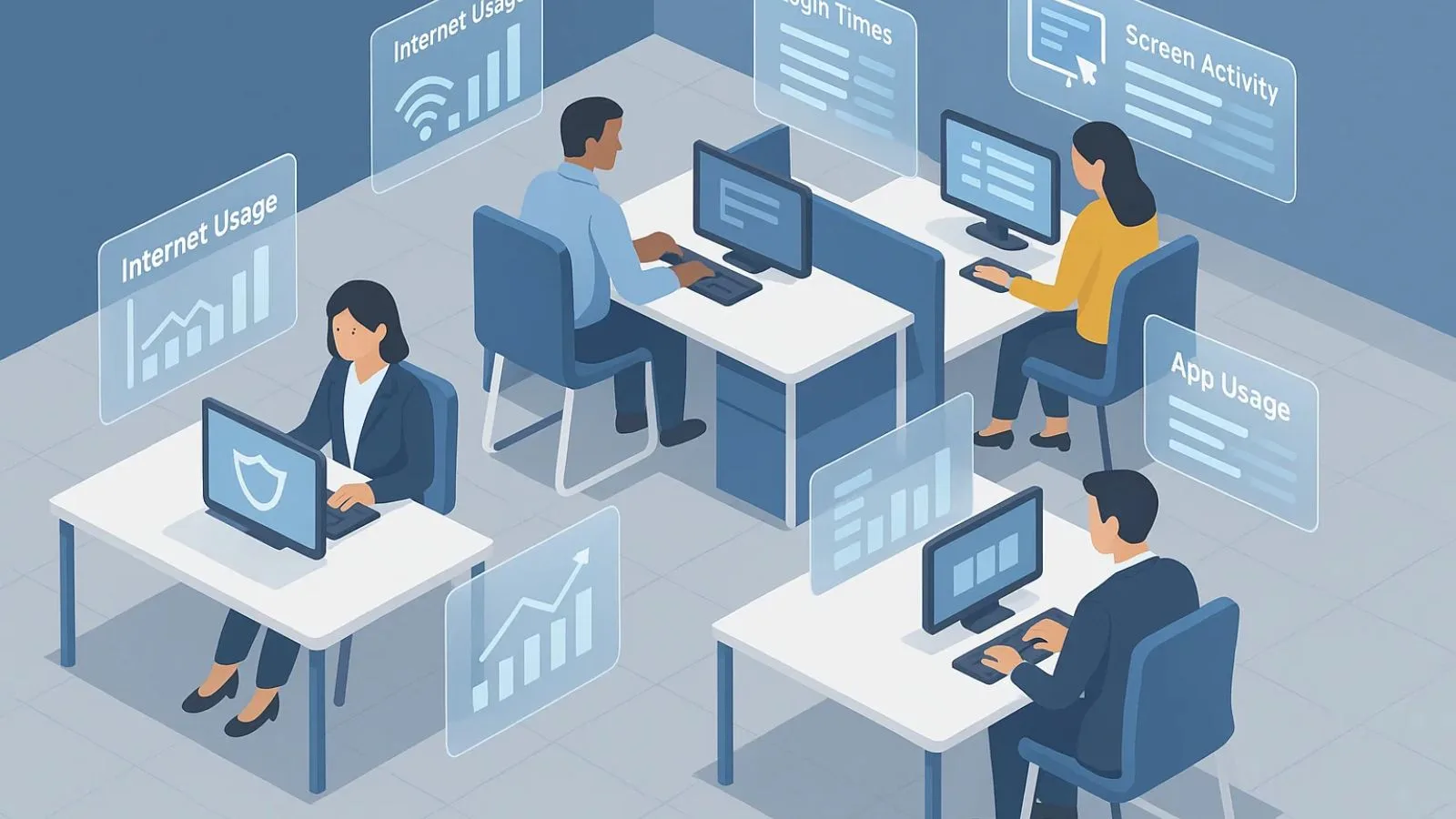
An employee monitoring policy is a formal document that outlines how a company tracks, observes, and analyzes employee activities during work hours. It defines the scope of monitoring, like internet usage, emails, screen activity, logins/logouts, and software usage, and informs employees what data is being collected and why.
This policy isn’t about micromanagement. Instead, it’s about creating a clear understanding between management and staff. It ensures employees know they’re being monitored and helps avoid confusion or pushback later. More importantly, it sets boundaries that protect both employee rights and company interests.
Companies today use various types of employee monitoring software to track activities in real-time. These tools collect valuable insights that improve productivity, strengthen security, and help manage remote or hybrid teams effectively.
By laying out this framework in your policy, you build transparency and reduce the risk of internal conflicts.
Why You Need an Employee Monitoring Policy in 2025?
With remote work, hybrid teams, and digital workflows becoming the norm, having a solid monitoring policy in place is more essential than ever. In 2025, businesses will rely heavily on digital tools, which means employees can work from virtually anywhere. While that’s a win for flexibility, it also brings new risks like productivity dips, data leaks, and policy violations.
This is where your Employee monitoring policy becomes your safety net. It helps create clarity and alignment around the purpose and process of monitoring. It’s not about spying, it’s about protecting resources, improving performance, and maintaining accountability.
Here’s what a strong policy helps you achieve:
- Productivity tracking: Know how time is spent across teams.
- Data security: Get alerted to risky behavior before it escalates.
- Legal protection: Clearly defined policies prevent compliance issues.
- Team transparency: Employees appreciate knowing what’s expected of them.
Without a defined monitoring policy, you risk legal trouble, internal mistrust, and underperformance.
Also Read,
How To Understand Workplace Policies In 2025 + Essential Tips For Employees
What to Include in Your Employee Monitoring Policy?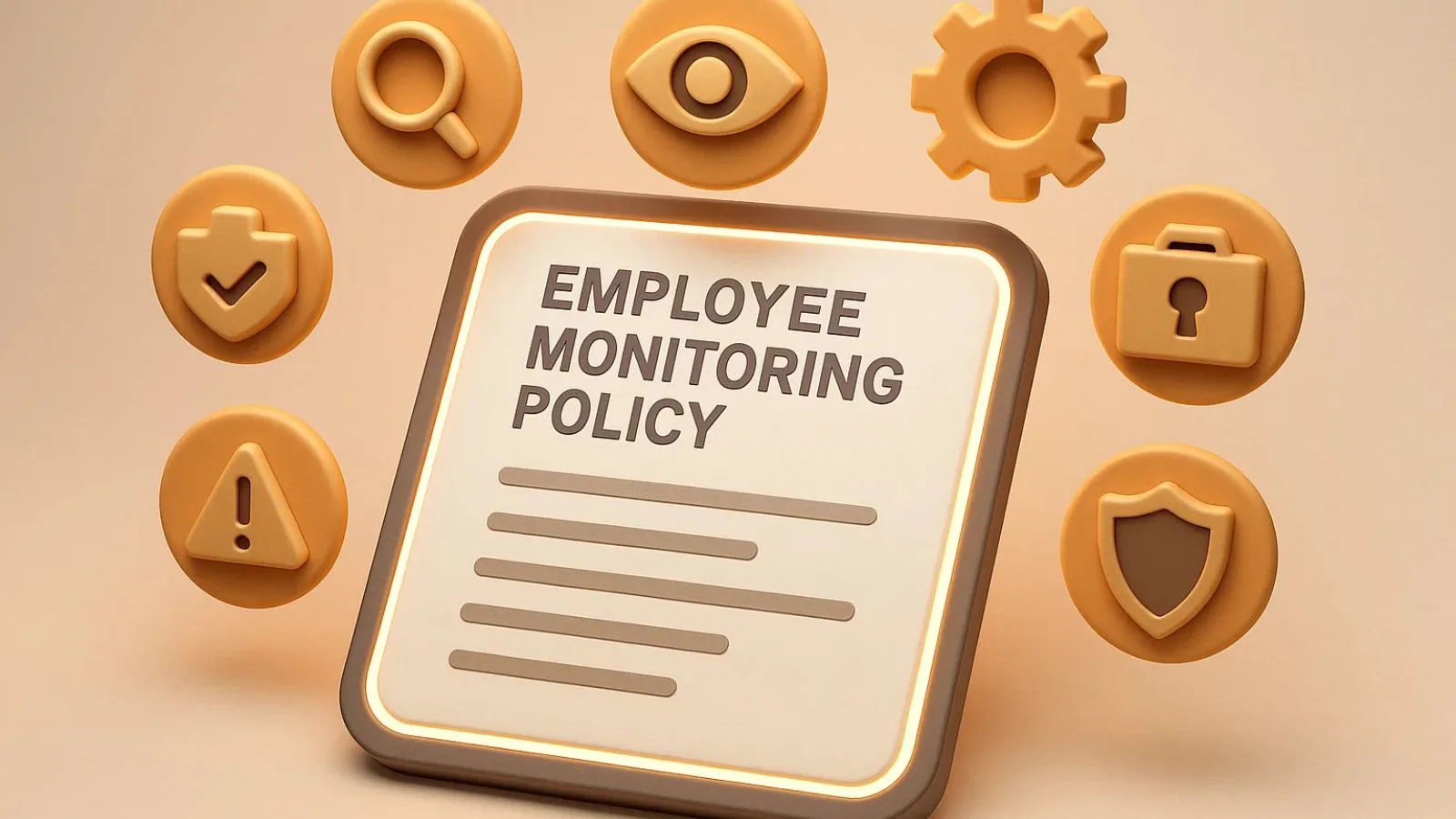
When creating a strong employee monitoring policy, clarity and transparency are everything. Your goal is to ensure your team knows what is being monitored, why it’s being done, and how the information will be used. Here’s what your policy should include:
1. Purpose of Monitoring
Start by explaining why monitoring is necessary. Is it for improving productivity? Securing data? Ensuring policy compliance? A clear purpose helps employees understand that monitoring is not about micromanaging, but about protecting business interests.
Example: “Our monitoring helps identify bottlenecks, improve workflows, and prevent unauthorized data access.”
2. What Will Be Monitored
List the specific activities or data points your company monitors. This could include:
- Internet usage
- Emails and communications
- App and software activity
- Log-in/log-out times
- Keystrokes or screen recordings (if applicable)
This is where a good employee monitoring policy example can come in handy. It helps communicate expectations clearly and leaves no gray areas.
3. Tools and Technologies Used
Mention the tools or employee monitoring software you’ll use. Transparency about tech builds trust. If you use tools like EmpMonitor, explain its features: activity tracking, screenshot capturing, real-time reports, etc.
4. Who Has Access to Monitoring Data
Explain who in the company can view or use the collected data, typically HR, managers, or IT teams. Be sure to mention how long the data will be retained.
5. Privacy and Data Protection
Assure employees that all data is handled responsibly. Clarify that personal information is not misused, and monitoring is done during work hours on company-owned devices.
6. Employee Rights
Good policies always include employee rights. Allow room for clarification, objections, or appeals. Let them know who they can contact with concerns.
7. Consequences for Policy Violations
Be upfront about what happens if the policy is violated. Depending on the issue, it might lead to a warning, an investigation, or even disciplinary steps.
How To Communicate The Policy To Employees?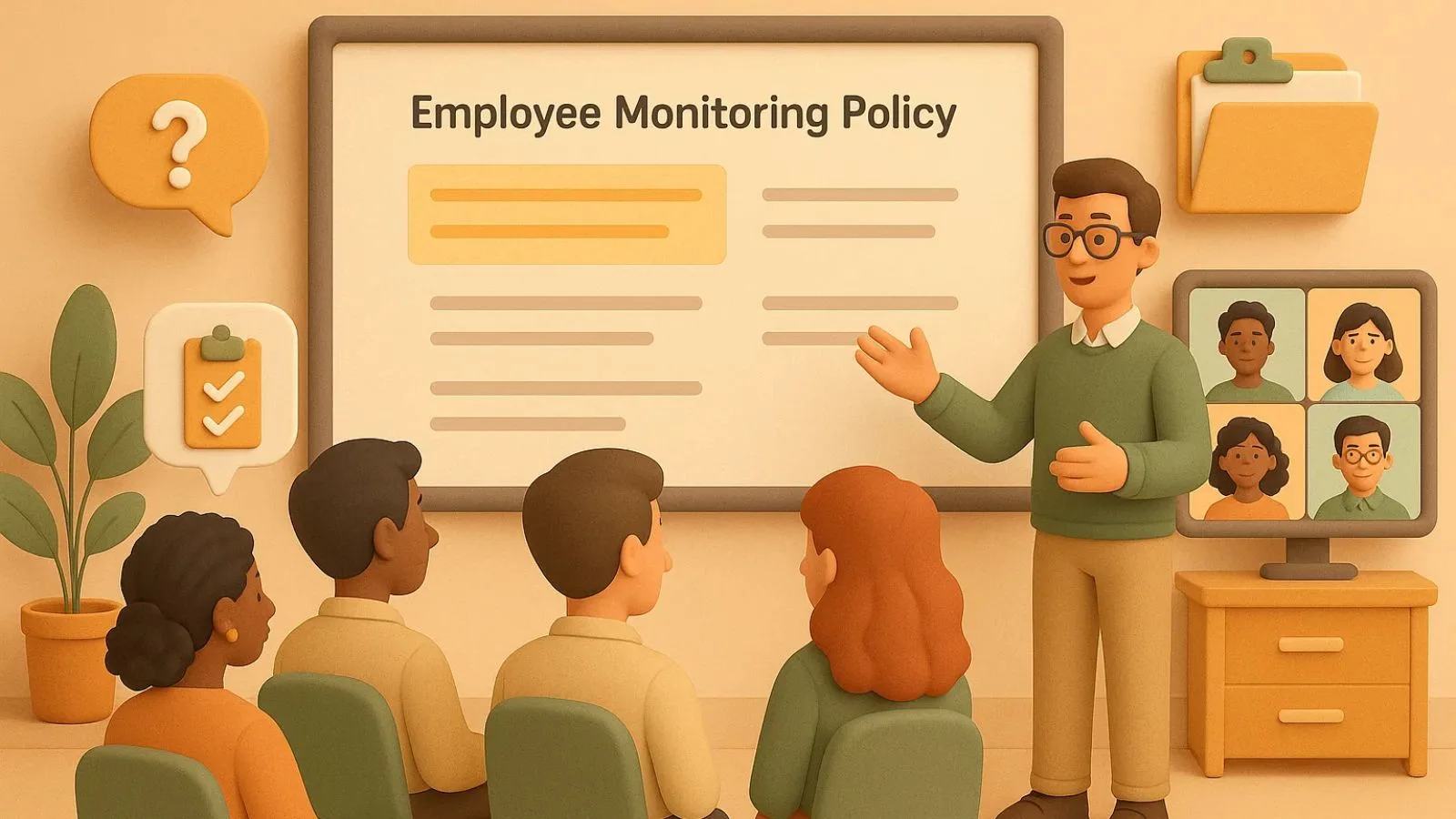
Even the most well-written Employee monitoring policy won’t work if your team isn’t aware of it or doesn’t understand it. Communication is the bridge between your intentions and employee trust. So, how can you introduce the policy effectively?
1. Use Clear and Simple Language
Avoid legal or technical jargon. Keep the tone conversational so employees feel you’re informing them, not issuing orders. Break down complex points and explain them like you’re talking to a peer.
Tip: Share a brief Employee monitoring policy example in simple terms to illustrate what the policy looks like in action.
2. Host a Team-Wide Announcement or Workshop
Don’t just email the policy and expect everyone to read it. Hold a meeting, workshop, or even a virtual town hall. Explain the policy, walk them through why it matters, and show real-life scenarios.
3. Provide a Written Copy
Every employee should receive a copy of the policy either as a PDF, a printed handout, or uploaded to the company portal. Make sure it’s easy to find and refer to later.
4. Open the Floor for Questions
Invite questions and feedback. Employees will feel more included and respected if you encourage open discussion. They may even point out gaps you hadn’t noticed.
5. Get Acknowledgement in Writing
Once communicated, ask employees to sign an acknowledgment form. This confirms they’ve received, understood, and accepted the policy. It also helps protect your organization legally.
6. Make It Part of Onboarding
For new hires, include the employee monitoring policy during onboarding. This sets expectations from day one and avoids surprises down the road.
Also Read,
Effective Team Strategy For Both Employees And Employers To Excel
Legal Considerations of an Employee Monitoring Policy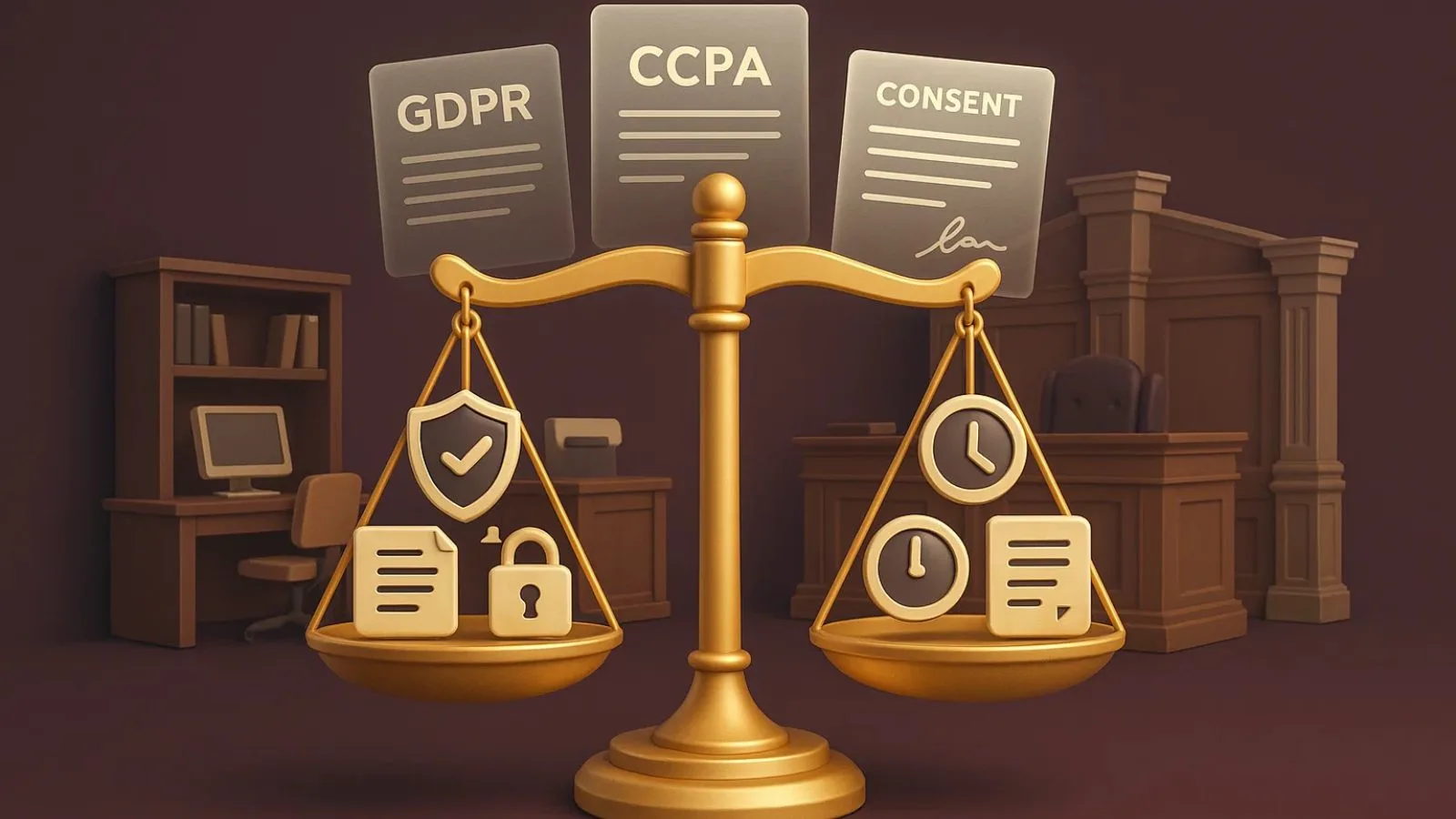
Before putting any Employee monitoring policy into action, it’s essential to ensure you’re not stepping over any legal lines. Workplace surveillance can quickly turn into a liability if it isn’t backed by proper legal compliance. Here’s what you should keep in mind:
1. Understand Local and National Laws
Laws around employee monitoring vary by country and even by state. Some regions require employers to notify employees before any kind of digital surveillance. Others mandate written consent. Always check your local labor laws before finalizing your Employee monitoring policy.
2. Only Monitor What’s Necessary
You should only track activities that are truly needed for running the business, both legally and ethically. For example, tracking work-related communications is usually acceptable, but recording personal messages or using webcams to spy can cross a line.
Keep your Employee monitoring policy focused on job-related performance, productivity, and security, not personal behavior.
3. Be Transparent
Transparency is your legal safety net. Always let your employees know:
- What will be monitored (emails, websites, time tracking, etc.)
- Why is it being monitored?
- How the data will be stored and used
- Who will have access to it?
Being clear about what you monitor builds trust and helps you stay out of legal trouble.
4. Use Consent Wisely
In many places, employee consent isn’t just nice to have; it’s legally required. Include a consent clause in your policy and ask for signatures, just like you would with other workplace documents.
A good Employee monitoring policy example always includes an acknowledgment section for consent.
5. Protect Employee Privacy
Even with consent, you must protect employee data. Use secure systems, limit access, and comply with data protection laws like GDPR or CCPA where applicable.
6. Consult Legal Experts
When in doubt, consult with an employment lawyer. Taking this simple step now can prevent big problems in the future.
Also Read,
12 Top Most Enquired Questions About Employee Monitoring Laws
Tools That Can Help Enforce Your Policy Effectively
Once your employee monitoring policy is written and shared, the next big step is implementation, and that’s where technology plays a key role. Without the right tools, even the best-written policy will fall flat. Let’s explore how to make your policy actionable with smart software support.
Why You Need Monitoring Tools?
You can’t just write a policy and expect results. You need systems that:
- Track productivity in real time
- Monitor user activity ethically and transparently
- Offer insights that support HR and team leaders
That’s where employee monitoring software comes in.
Meet EmpMonitor: Your All-in-One Monitoring Solution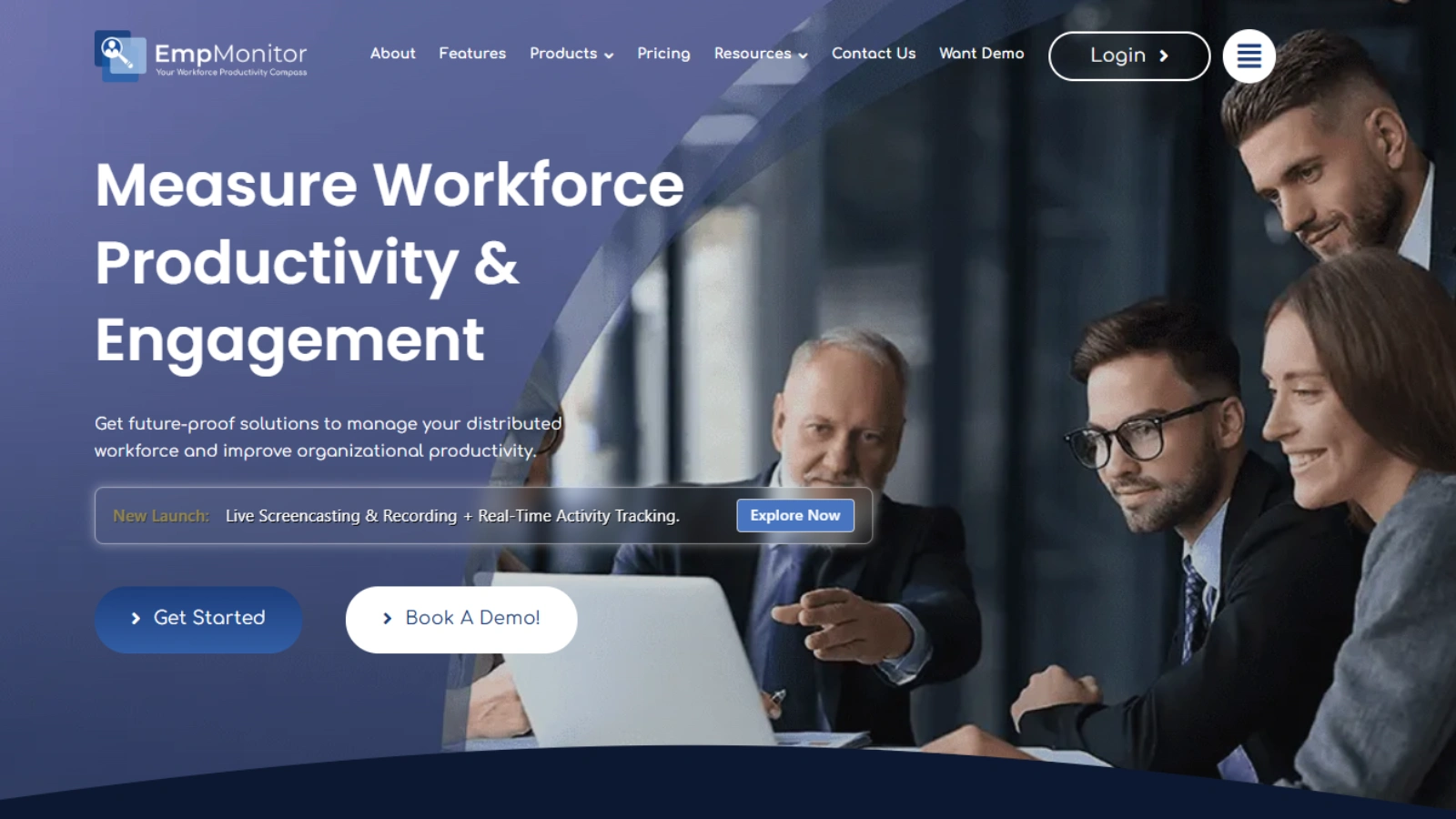
If you’re looking for a powerful yet balanced solution, EmpMonitor is a smart choice. It not only supports your workplace monitoring policy but also helps ensure compliance, transparency, and productivity.
Key Features of EmpMonitor:
Activity Tracking
See which apps, websites, and tools your employees use during work hours without overstepping boundaries.
Productivity Reports
Generate detailed performance reports to understand what’s driving results and where time is being wasted.
Time Management
Track login/logout times, breaks, and active working hours automatically.
Data Security
Your team’s data is protected with high-end encryption and limited admin access.
Real-Time Monitoring
Monitoring user behavior as it happens helps catch policy violations early.
Custom Alerts and Screenshots
Get alerts for suspicious activity and view screenshots as proof only when necessary and within legal limits.
With its balance of transparency, security, and productivity tools, EmpMonitor stands out as the best employee monitoring software, helping companies manage their monitoring policies more effectively while building a smarter, compliant workplace.
Common Mistakes to Avoid in an Employee Monitoring Policy
Creating a monitoring policy isn’t just about outlining rules; it’s about building trust while maintaining accountability. But many organizations make simple mistakes that cost them both productivity and employee goodwill. Let’s break down what not to do.
Being Too Vague
Just saying “We monitor employees” in a policy isn’t clear or sufficient. Employees deserve clarity. For example, a good employee monitoring policy example lists what data is being tracked—emails, browser activity, app usage, etc., and for what purpose.
Solution: Be detailed without being overwhelming. Clarity builds trust.
Ignoring Legal Requirements
Failing to align with local labor laws and data privacy regulations can backfire. Your workplace monitoring policy must comply with region-specific rules (like GDPR, HIPAA, etc.).
Solution: Always consult legal advisors before finalizing your policy.
Skipping Employee Consent
Some companies implement monitoring systems without informing staff. It can cause employees to lose trust and may result in legal trouble
Solution: Be transparent. Ask for written acknowledgment and provide training or onboarding when rolling out the policy.
Over-Monitoring
When companies go overboard with constant screen recording, keylogging, or webcam access, it creates a culture of fear.
Solution: Monitor only what’s necessary. Tools like employee monitoring software allow customizable tracking so you don’t cross ethical lines.
No Clear Consequences
A strong workplace monitoring policy example outlines what happens if someone violates the policy. Without this, rules are hard to enforce.
Solution: Define consequences like written warnings or review meetings clearly in the document.
Avoiding these pitfalls keeps your monitoring approach ethical, legal, and effective.
How to Get Employee Buy-In for Monitoring Policies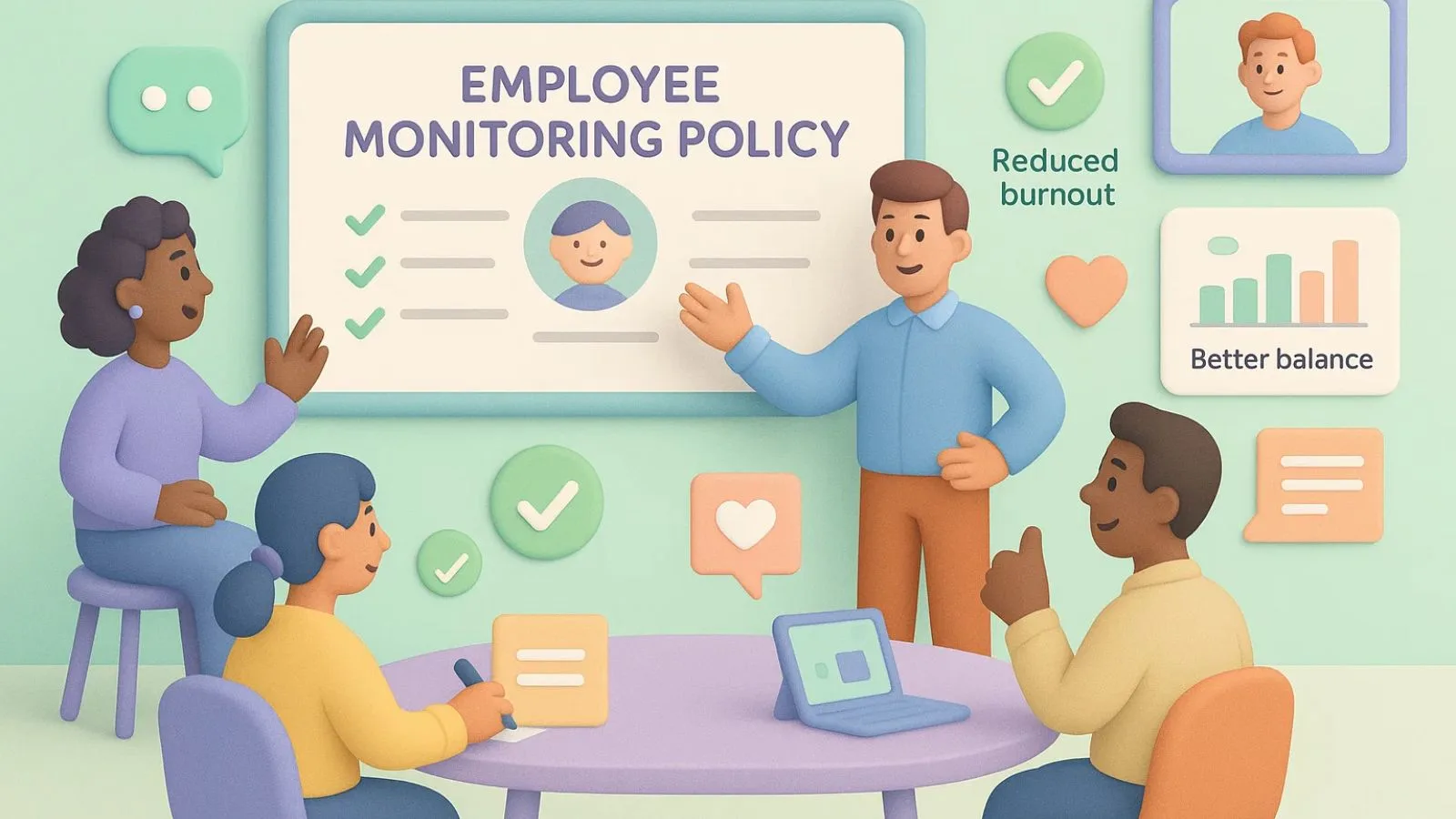
Rolling out a monitoring policy is only half the battle; the other half is ensuring your team understands and supports it. Without buy-in, even the best policy can lead to resistance, low morale, or quiet quitting. So how do you get your employees on board?
Start with Honest Communication
Before implementing monitoring tools or policies, talk to your team. Explain why you’re introducing a workplace monitoring policy, not just what it includes. Employees are more likely to support the initiative when they see how it helps productivity, security, and work-life balance.
“We’re introducing this policy to reduce burnout, improve efficiency, and ensure secure operations, not to micromanage.”
Share a Clear and Friendly Policy
Use simple, jargon-free language in your employee monitoring policy. Make it easy to understand. Include real-world scenarios or an employee monitoring policy example so employees know what to expect in day-to-day work.
Pro tip: Use visuals, FAQs, or short training videos to explain the policy in a digestible format.
Invite Feedback and Participation
Allow your employees to contribute to the development or revision of the policy. This makes them feel seen and heard, and improves overall adoption.
“What would help you feel more comfortable with this policy?” is a powerful question that builds trust.
Emphasize the Benefits
Don’t just talk about the rules, highlight the positive outcomes. Monitoring can help balance workloads, identify team bottlenecks, and support hybrid work with tools like employee monitoring software.
Provide Training & Onboarding
Make training a part of onboarding for new employees, and offer refreshers for current staff. By building transparency and focusing on mutual benefit, you can turn your employee monitoring policy from a rulebook into a shared agreement.
Conclusion
Crafting an effective employee monitoring policy is not just a legal formality; it’s a strategic move to build transparency, accountability, and productivity within your organization. A well-drafted policy helps your team understand what is being monitored, why it matters, and how it benefits them.
From defining clear objectives to staying compliant with data privacy laws, every step matters. And when paired with reliable employee monitoring software like EmpMonitor, you don’t just watch over your team, you support them with data-driven insights, fair evaluation, and better workflow management.
Remember, monitoring should never feel like surveillance. With a smart workplace monitoring policy, you’re creating a safer, more focused, and efficient work environment.
FAQs
1. Why is an employee monitoring policy important?
An employee monitoring policy sets clear guidelines on how, why, and when monitoring takes place. It promotes trust, ensures legal compliance, and protects both the company and the employees.
2. What should be included in a workplace monitoring policy?
Your workplace monitoring policy should include the purpose of monitoring, the tools used, the type of data collected, privacy considerations, and employee rights. Including a workplace monitoring policy example also helps clarify expectations.
3. Can I use monitoring software without telling employees?
Legally, that depends on your region, but ethically and practically, it’s always better to inform your employees. Transparency builds trust and reduces friction. A documented employee monitoring policy example helps keep everything above board.

